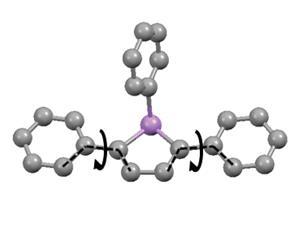Graphene-like monolayer could be made by exfoliating grey arsenic
Inspired by recent work on phosphorene, silicene and other two-dimensional allotropes, a pair of researchers has been investigating the potential properties of arsenene – a honeycomb monolayer of arsenic.

Chinnathambi Kamal from Raja Ramanna Centre for Advanced Technology, India, and Motohiko Ezawa, University of Tokyo, Japan, carried out theoretical calculations to explore what arsenene would be like. Although a planar, graphene-like form would be unstable, they found it could potentially exist in two ridged forms – a ‘puckered’ sheet with deep, trench-like ridges, as in phosphorene, or a ‘buckled’ sheet with shallower, zig-zag ridges like silicene or blue phosphorene.
Both forms would be semiconductors with a small indirect band gap that could be tuned by applying mechanical strain. The duo suggest that, like its other two-dimensional relatives, arsenene might find uses in devices such as LEDs and solar cells. They hope their work will motivate experimentalists to try and grow arsenene and verify their predictions. They suggest this could be done by exfoliating grey arsenic, a layered form of the buckled honeycomb sheets.












No comments yet